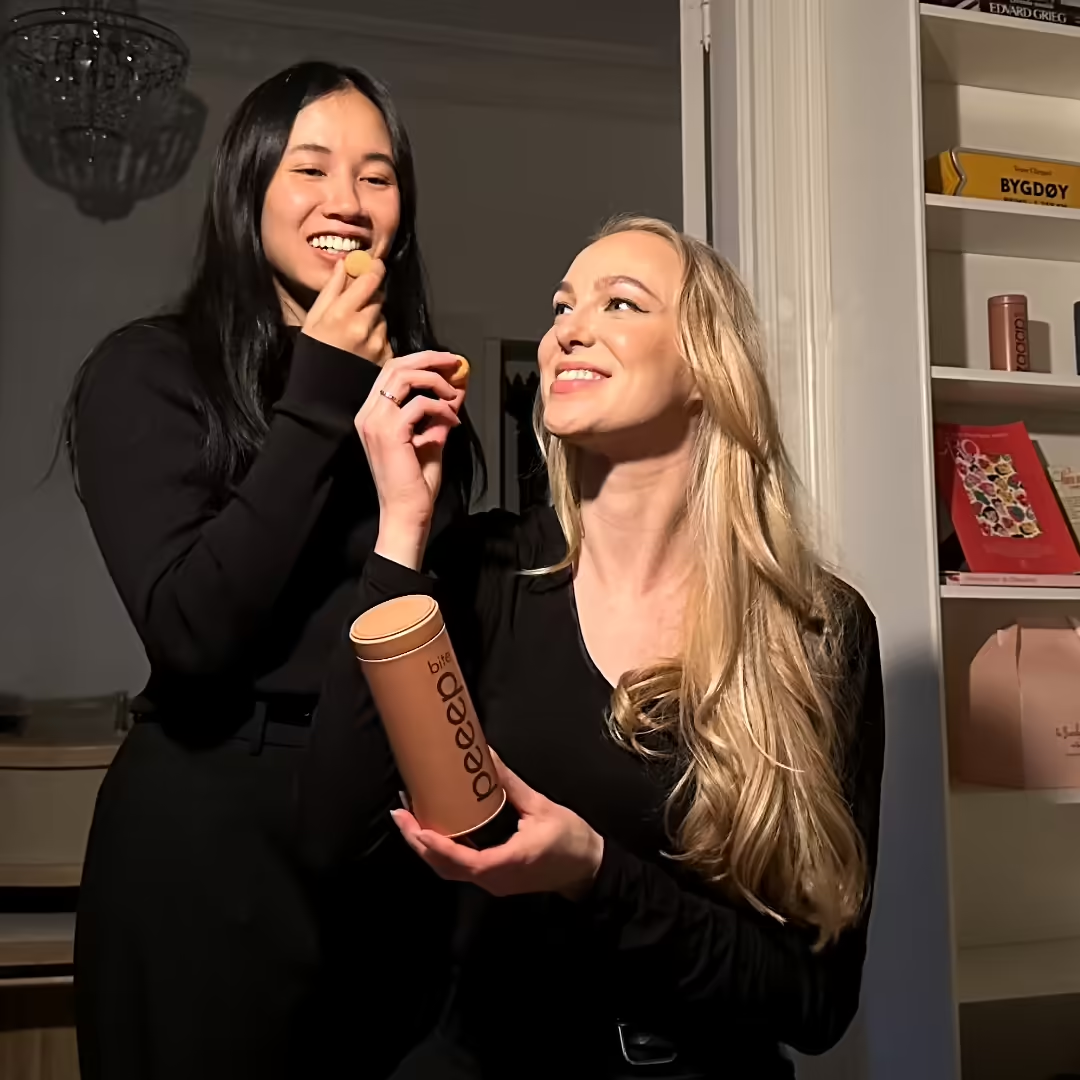🧡 Pre-Order now 🧡

Every day, we are exposed to hundreds of photo-shopped and airbrushed images. In a culture that places a high value on appearance, it's easy to feel like we don't measure up. Most of us are self-conscious about at least one body part. For many people, it’s their skin. Luckily, there is the new skin positivity movement. Much like body positivity, skin positivity is about accepting your skin just as it is, instead of trying to “fix” it with myriad products or procedures. Because your happiness shouldn’t hinge on impossible-to-achieve beauty standards!
The skin is the largest organ in the body, and one of the most vital. It regulates body temperature, protects your body from bacteria, ultraviolet light, and other toxins, and provides crucial sensory information about your environment. But we often take these critical functions for granted. Because skin is the “face” that we show to the world, it is easy to focus on how it looks versus the important purpose that it serves. Skin positivity is about appreciating your skin for its function versus its appearance.
Our attitudes about skin are socially constructed. Prior to the industrial revolution, a pale complexion was desirable because it was associated with a life of leisure, while suntans and freckles were associated with outdoor manual labor. Fast-forward to the 1980’s, and people flocked to tanning beds to get a “healthy,” sun-kissed glow. Similarly, popular media has created the stereotype of the nerdy, pimple-ridden outcast, as if the condition of your skin is somehow indicative of personality. Skin positivity means rejecting these trends and embracing a diversity of skin types.
The rise of digital photo technology has further distorted our perspectives on what skin should look like. If we believe what we see in magazines and online, skin should be completely smooth in texture, with no visible pores or blemishes. Rationally, we may know that no one has a flawless complexion, but it is hard not to compare ourselves to these idealized images. The skin-positivity movement aims to promote more accurate models of normal skin.

Did you know that skin conditions are the fourth most frequent cause of human illness? A study completed in Germany in 2019 found that 64.9 percent of participants had at least one skin abnormality, and others estimate that 1 in 3 people have a skin disease at any given time. The American Academy of Dermatology ranks acne as the number one most common skin condition, affecting up to 50 million U.S. citizens annually. Other common skin disorders include atopic dermatitis, rosacea, eczema, and hair loss. If you are struggling with these or other skin conditions, you are not alone!

Skin positivity doesn't happen overnight, but there are steps that you can take towards accepting and appreciating your skin. You can begin by simply paying attention to how you think about your skin and the amount of time that you spend engaging in appearance-focused activities. Then you can work on replacing these habits with more skin-positive ones. Like with any new habit, the more you practice, the easier it gets!
What activities do you currently engage in that cause you to focus on and feel bad about your skin? Maybe it’s scrolling through social media feeds or researching the latest beauty products. Or maybe you spend a lot of time in front of the mirror, zooming in on perceived blemishes, squeezing pimples and/or picking at scabs. Due to the psychological phenomenon of cognitive dissonance, our brains rationalize that the things we spend the most time and energy on are the most important. Therefore, by cutting back the time you spend on beauty routines, rituals, or research, you can effectively retrain your brain to prioritize other things instead of your appearance.
What thoughts most frequently occur when you think about your skin? Most people have a harsh inner critic that spins any number of distortions. It is also common to compare yourself unfavorably to others. Pay attention to these negative thoughts, and take some time to challenge their validity. Are you really “gross” simply because you have a few pimples? Why is it that having wrinkles is viewed negatively by our society? Is it possible to reframe wrinkles as a sign of wisdom or a life fully lived?
What are the things that you really value in life, aside from your appearance? What are the things that bring you joy, satisfaction, or a sense of purpose? Is it work, family, other relationships? Commit to spending more time and attention in these areas versus on your appearance.
If you are self-conscious about your skin, you might engage in some avoidance behaviors. For example, maybe you decline social invites when you are in the midst of a breakout, or maybe you never let anyone see you without your makeup on. Due to the “spotlight effect,” we tend to overestimate the degree to which others take note of our appearance and behavior. It's only by challenging these fears that you learn that people aren’t watching and judging you! Most likely, they are preoccupied with their own insecurities.
What is the antidote to the spotlight effect? Human connection. Focusing inward breeds loneliness and negative self-evaluation. Focusing outward allows us to see the commonalities that we share with one another. What’s more, meaningful connections with others breed happiness and life satisfaction. Connect with other people who are trying to redefine beauty and promote skin acceptance. Curate your social media feeds to feature skin-positive influencers.
Perhaps you are wondering, how do you embrace acne? It is particularly hard to feel positive about skin conditions that are itchy and/or painful, like eczema or acne. If this is the case for you, skin neutrality might be a more achievable goal. What is skin neutrality? It means accepting the state of your skin even though it causes you discomfort. Skin neutrality is based on the principle of radical acceptance, which posits that much of our suffering comes from refusing or resisting things that are outside of our control.

At the heart of skin positivity is the belief that your skin should not define you. How you put this belief into practice is up to you! Accepting and appreciating your skin doesn’t necessarily mean forgoing makeup, beauty routines, and skincare procedures all together. What it does mean is being mindful about how much time, money, and energy you spend on these activities. For example, if you are using makeup as a mask to “cover up” what you find unacceptable, you may want to challenge yourself to go without makeup some of the time. Similarly, if keeping up with beauty trends is stressful or obsessive, you will probably feel better if you redirect your attention to something else.

Skin positivity is about appreciating your skin for all of the important functions that it serves instead of its appearance. It’s about rejecting popular notions of what skin “should” look like, and redefining what constitutes beauty. By being more mindful about how much time, energy, and money we spend trying to improve our skin, we can redirect our attention to the things that bring us long term satisfaction. After all, what is more beautiful than making a meaningful connection, pursuing a passion, or fully engaging in an activity that brings you joy?

1. Start by improving your self-image. Take time to focus on the things that make you unique and special, rather than what you don't like about yourself.
2. Focus on practicing self-care. Take time for yourself, do things that make you feel good, and practice self-compassion.
3. Celebrate your skin. Take time to appreciate the beauty of your skin and all its features, even the ones you don't like.
4. Embrace beauty diversity. Understand that beauty comes in all shapes, sizes, and colors, and that you don't have to fit into any particular mold to be beautiful.
5. Connect with other people. Spend time with people who make you feel positive and accepted, and don't be afraid to speak up if someone is being negative or hurtful.
6. Educate yourself. Develop an understanding of skin health, and learn how to properly care for your skin.
Skin neutrality is the idea that skin color should not be a factor in how people are judged or treated. It is based on the concept of racial equality, suggesting that everyone should be treated equally regardless of their skin color or ethnicity. It encourages individuals to accept and respect each other’s differences while celebrating diversity.
Acne positivity is a movement that encourages people to accept and love their skin regardless of any acne or blemishes they may have. It is based on the idea that beauty is not determined by the appearance of your skin, and that acne does not define you or your worth. This movement encourages people to embrace their acne, instead of trying to hide it or feel ashamed of it.
1. Accept and embrace your acne as part of your journey. It's okay to be frustrated or upset about having acne, but try to focus on the positive things in your life and the fact that it will eventually go away.
2. Practice self-care and avoid picking at your acne. This can cause further irritation and worsen it.
3. Use gentle skincare products, such as those labeled "non-comedogenic" and "non-acnegenic". These products are specifically designed to help reduce acne without further irritation.
4. Talk to a dermatologist about your options for managing your acne, such as topical medications, light treatments or oral medications.
5. Try to maintain a positive outlook and remember that acne is a normal part of growing up.
